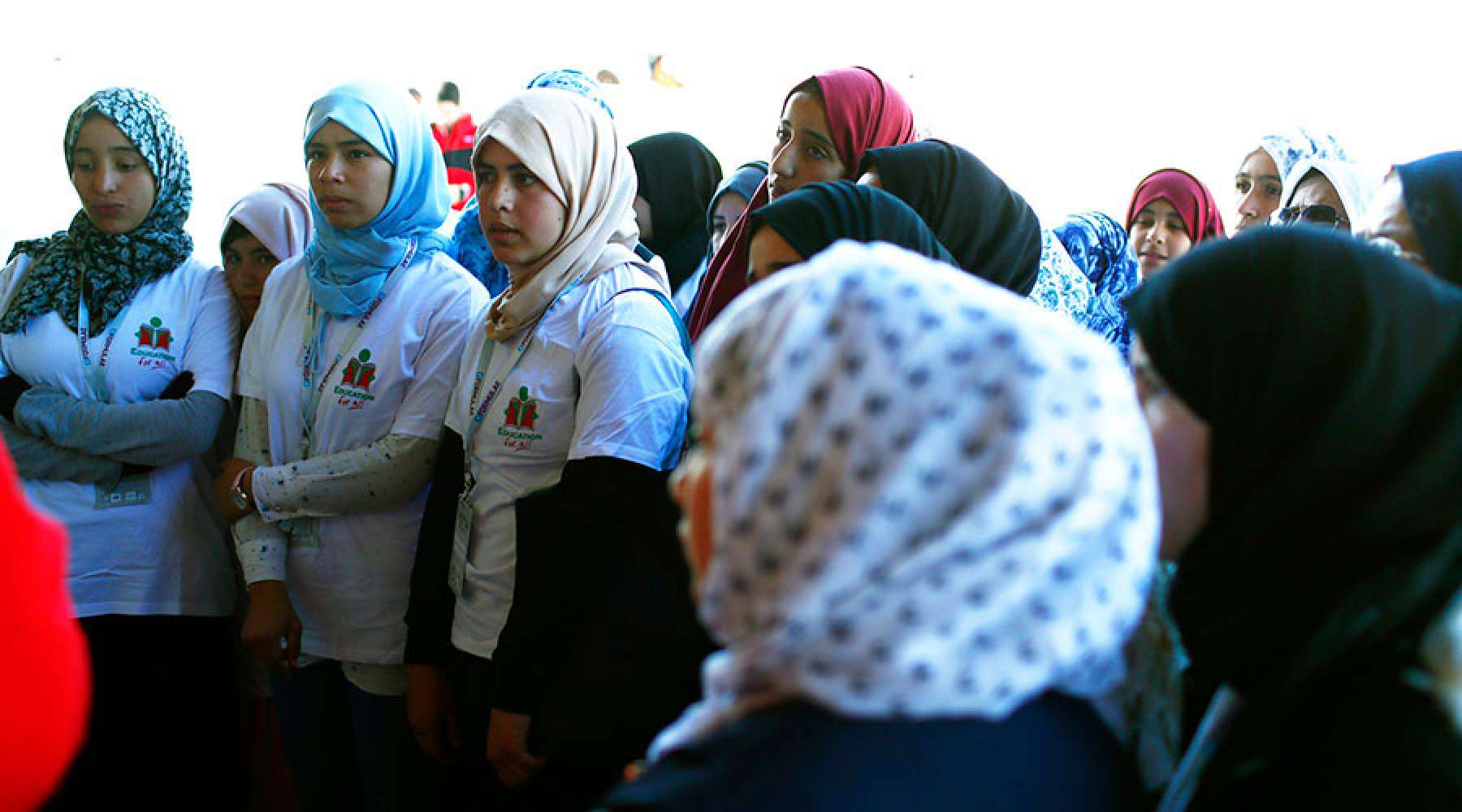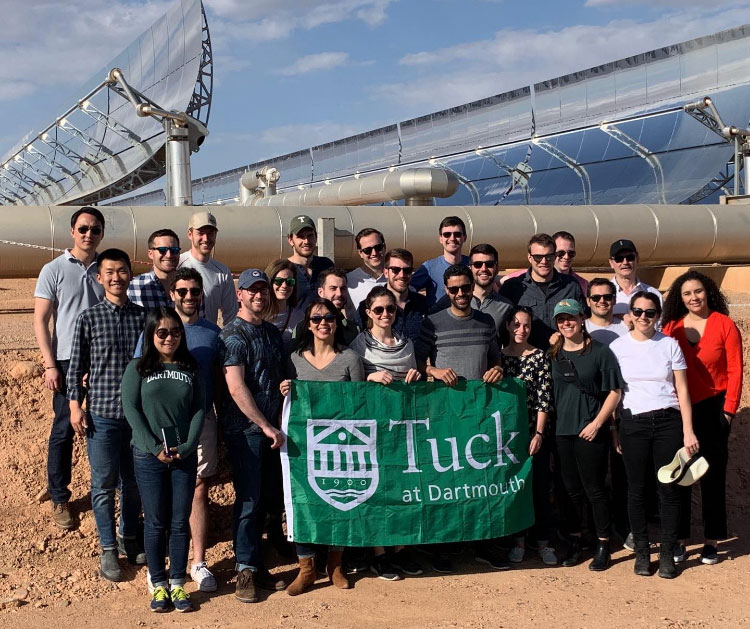
The Global Insight Expedition (GIX) is a major highlight of the Tuck experience. Every year, hundreds of Tuckies travel to all corners of the world to immerse themselves in cultural, academic, and professional experiences. In my case, I traveled to Morocco with a group of 22 Tuckies, April Salas (Executive Director of the Revers Center for Energy), and Dartmouth Associate Professor Dirk Vandewalle. The Morocco GIX combined everything that I wanted to get out of this experience: traveling to an “exotic” country and to Africa for the first time, and getting firsthand experience in challenges related to energy.
The trip had a packed agenda. We went to seven different places in 10 days. We started in Rabat, where we visited the U.S. embassy and the Moroccan Agency for Sustainable Energy (MASEN). At MASEN we discussed Morocco’s energy strategy and the objective of the country for renewables to represent 52 percent of its energy sources by 2030, it was very interesting to hear about the level of involvement of the Moroccan monarchy in the energy policy and development of the country.

The next day we went to Tangier where we visited the ACWA Power wind farm, a project that was developed in conjunction with a Saudi Arabian company and with funding from the international finance community. After Tangier we went to Fes, with a short visit along the way to Chefchaouen “the blue city,” which was one of my personal favorites of the trip. In Fes we had lunch with local families, toured the medina, and had an engaging conversation with a women’s rights activist. Our main topic of discussion was the balance between the traditional Muslim values and view of the world and the advancement of women’s rights in Morocco—once again the monarchy had a key role in this discussion.
After Fes, we went to Casablanca to visit the Hassan II Mosque, one of the biggest in the world, an interesting fact about the mosque is that every Moroccan was asked to contribute for its construction by the king himself. After Casablanca we flew to Ouarzazate, a town in the middle of the Moroccan desert famous for being the filming location of several movies including Star Wars and Gladiator. However, we did not go to Ouarzazate only for its impressive landscapes. The Noor Solar Plant (light in Arabic), is within minutes of Ourzazate and is the largest concentrated solar power plants (CSP) in the world. At Noor, solar energy is transformed into electricity with the help of thousands of mirrors that heat a liquid that then enters in contact with water to produce steam. A highlight of the Noor plant is its capacity to store up to six hours of energy, allowing it to dispatch power even when the sun is not shining.
Our final destination was Marrakesh where we visited Education for All, a nonprofit that provides housing for girls from remote rural populations so that they can attend school; Mahjouba, a startup that is trying to produce motorcycles suited for the local population while employing artisans that work in medinas across the country; and the Université Potytenique Mohammed VI, where we discussed with young students different entrepreneurial ventures.
After 10 days, I went back to the U.S., reflecting on how little I knew about Morocco before my trip. In particular, I was surprised to learn about the power and influence that the monarchy has in the country and how the king’s vision is present in a wide range of topics—from energy policy to women’s rights.
Feature image courtesty of Education for All
Daniel is a Colombian T’20. Prior to Tuck, he worked for a Colombian-Korean private equity fund. He is a co-chair of the Latin American and Iberian Business Club and a fellow of the Revers Center for Energy. This summer, he will intern at Macquarie Capital in NYC working on the energy investments group for Latin America.